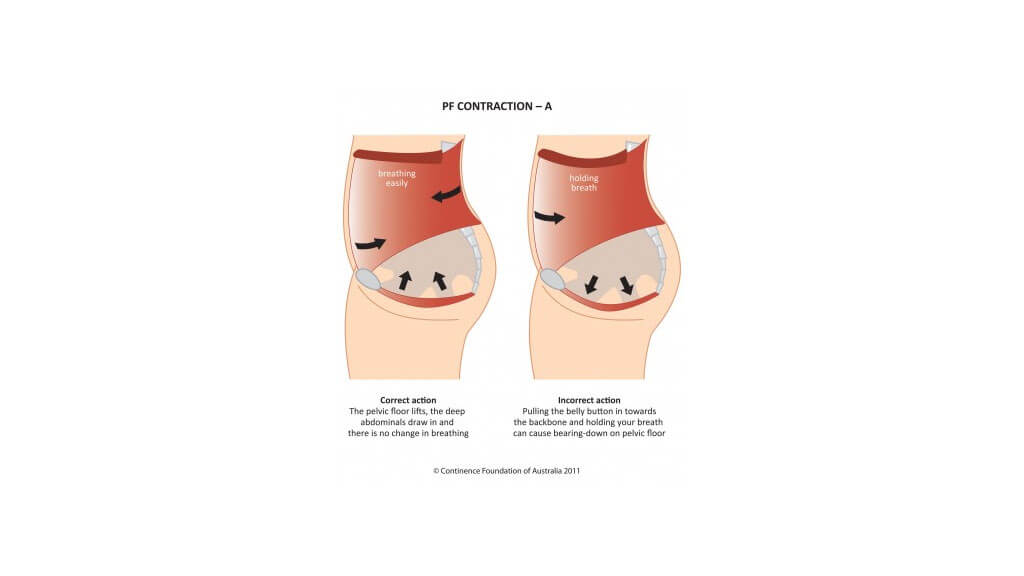
Pelvic floor and the core – are you activating correctly?
For anyone who has visited classes here at Pilates Connection, you’ll know that we only allow a maximum of 3-4 per class so we can focus on the correct technique for each and every member. Achieving great pelvic floor technique means activating the right muscles in the right order to get the most out of each exercise, something that’s difficult to monitor in larger class sizes, as the movements are very subtle and hard to notice.
One instruction you’ll hear us repeat over and over is “engage your pelvic floor” – why is this important, and how do you know if you’re doing it correctly? We’ve recently read a statistic that over 50% of people activate their pelvic floor incorrectly – in many cases this means they are using the wrong muscles, and weakening others, which can contribute to bladder leakage and even a prolapsed pelvis down the track.
Here’s some important information we thought you may find interesting, sourced from Pelvic Floor First – an Australian Government initiative.
What is the Pelvic Floor?

The pelvic floor is the base of the group of muscles referred to as your ‘core’. These muscles are located in your pelvis, and stretch like a trampoline or hammock from the pubic bone (at the front) to the coccyx or tail-bone (at the back) and from side to side (diagram 1).
The pelvic floor muscles work with your deep abdominal (tummy) and deep back muscles and diaphragm to stabilise and support your spine. They also help control the pressure inside your abdomen to deal with the pushing down force when you lift or strain – such as during exercise.
Pelvic floor muscles support and help control the bladder and bowel in men, and the bladder, bowel and uterus in women
Why is it important to engage your pelvic floor correctly?
During exercise, the internal pressure in the abdomen changes. For example; when lifting a weight – the internal pressure increases, when the weight is put down – the internal pressure returns to normal.
In the ideal situation the regulation of pressure within the abdomen happens automatically. For example, when lifting a weight, the muscles of the ‘core’ work together well- the pelvic floor muscles lift, the abdominal and back muscles draw in to support the spine, and breathing is easy (Diagram 1). In this scenario, the pelvic floor muscles respond appropriately to the increase in abdominal pressure.
If any of the muscles of the ‘core’, including the pelvic floor, are weakened or damaged, this coordinated automatic action may be altered. In this situation, during exercises that increase the internal abdominal pressure, there is potential to overload the pelvic floor causing depression (Diagram 2). When this happens many times during each exercise session, over time this may place strain down on the pelvic organs and this may result in loss of bladder or bowel control, or pelvic organ prolapse. If a problem already exists, then pelvic floor symptoms can potentially be worsened.

Diagram 1. Correct action Diagram 2. Incorrect action
Pelvic floor muscles need to be flexible to work as part of the ‘core’, which means that they need to be able to relax as well as lift and hold. It is common for people to brace their ‘core’ muscles constantly during exercise in the belief they are supporting the spine, but constant bracing can lead to the muscles becoming excessively tight and stiff.
Pelvic floor muscle stiffness commonly coexists with muscle weakness and can contribute to problems such as urinary urgency and leakage. Other problems often associated with the pelvic floor muscles being too tight include pelvic pain, and difficulty emptying the bladder.
Are you engaging correctly?
It’s very difficult to learn correct pelvic floor technique from looking at a diagram or pamphlet – which is why we spend so much time in Pilates classes ensuring this is done correctly. Not only do we repeatedly verbally cue pelvic floor activation, we also employ nonintrusive strategies to encourage correct and effective engagement of the deep core stabilisers. As the movements are very precise, it takes a well- trained instructor, and plenty of practice and patience to perfect, however when done correctly, you’ll notice a big improvement in many of the exercises we give you, and how they affect your overall strength and flexibility.
Did you know that 1 in 3 Australian women display pelvic floor dysfunction (and it’s also very common in men)? So if you display any signs of a weak pelvic floor (like bladder leakage, no matter how light), please make us aware, and we can offer some strengthening exercises for you.
Next time you’re in the studio, ask one of our instructors for a pelvic floor check, and get MORE from your CORE!

Sorry, the comment form is closed at this time.